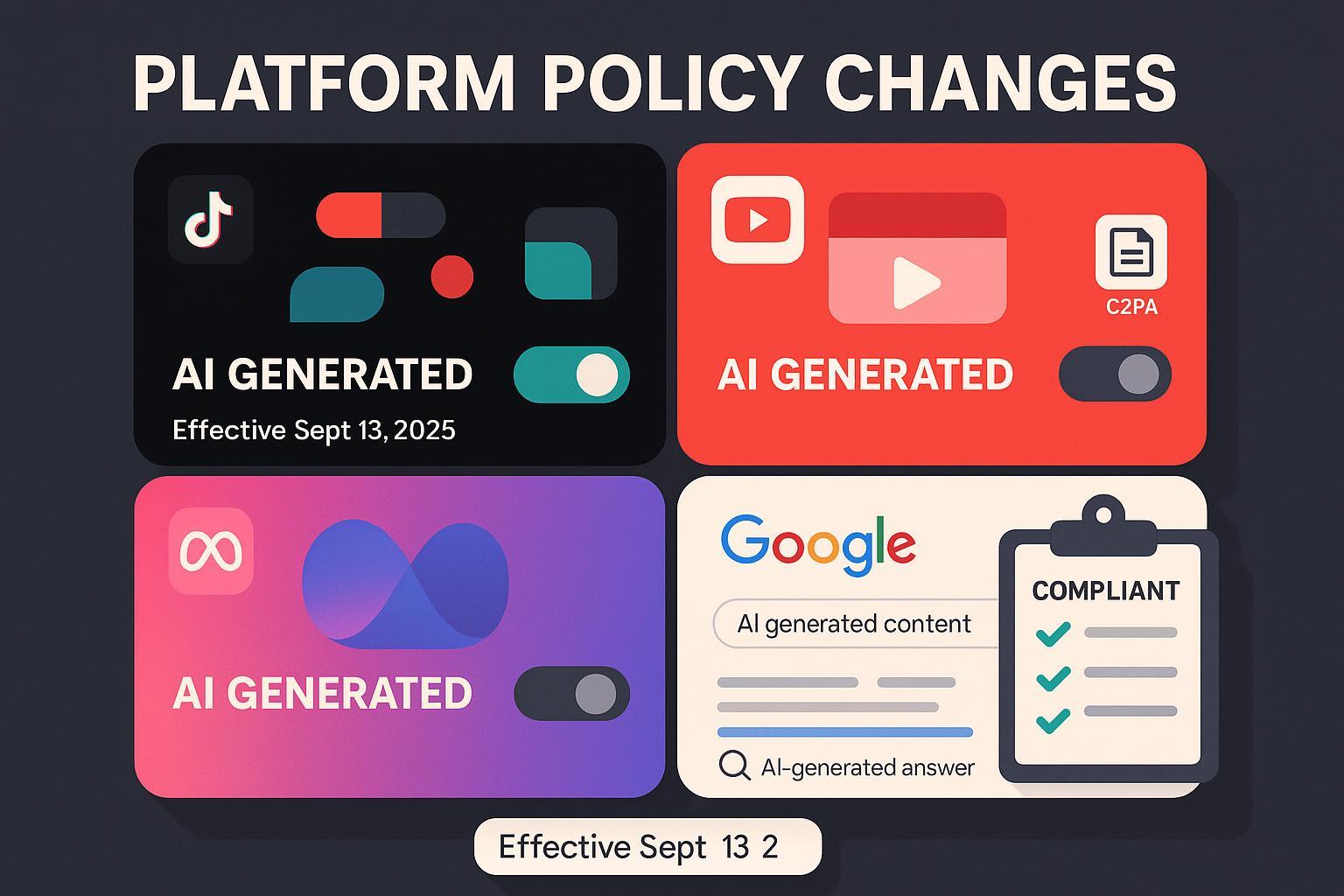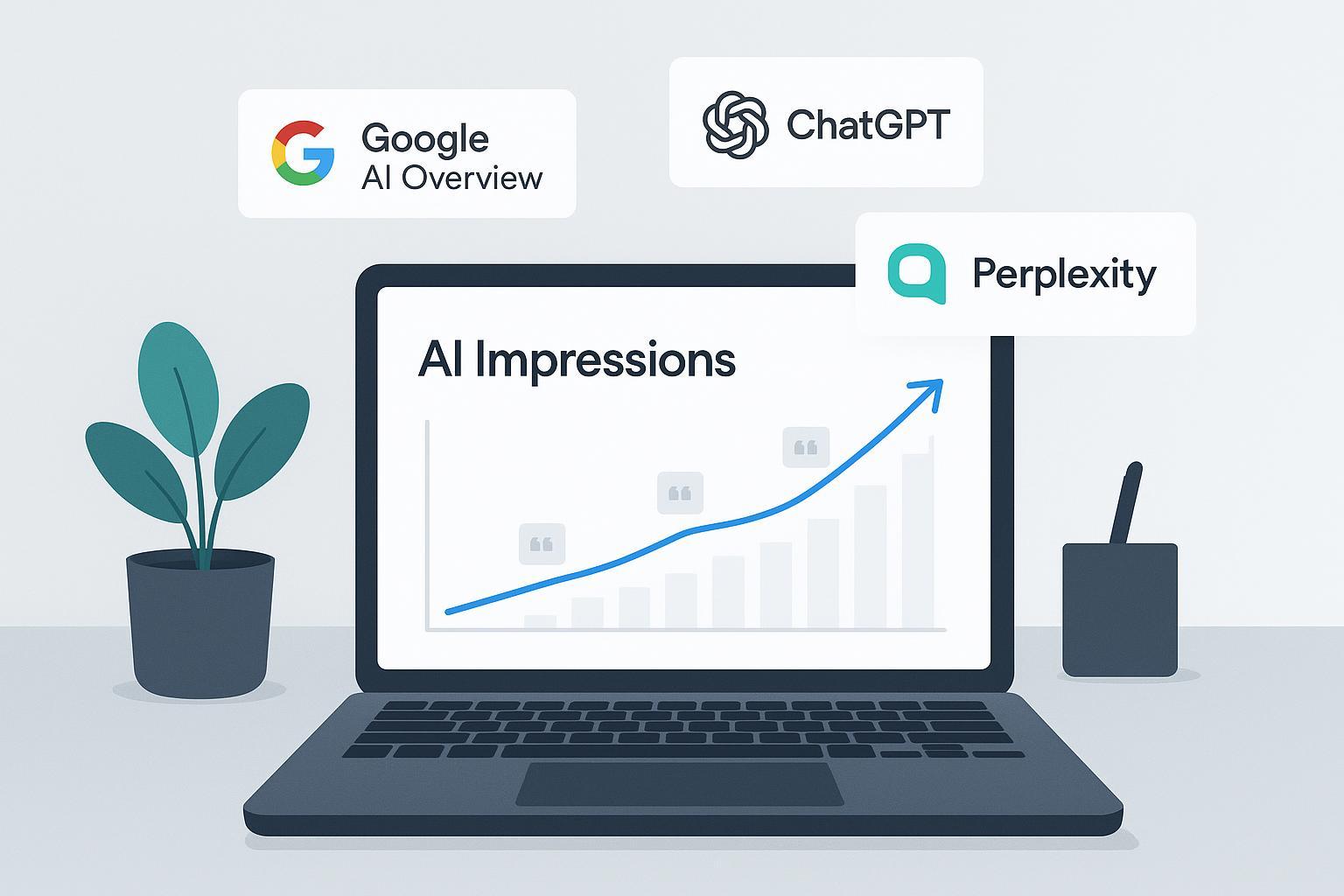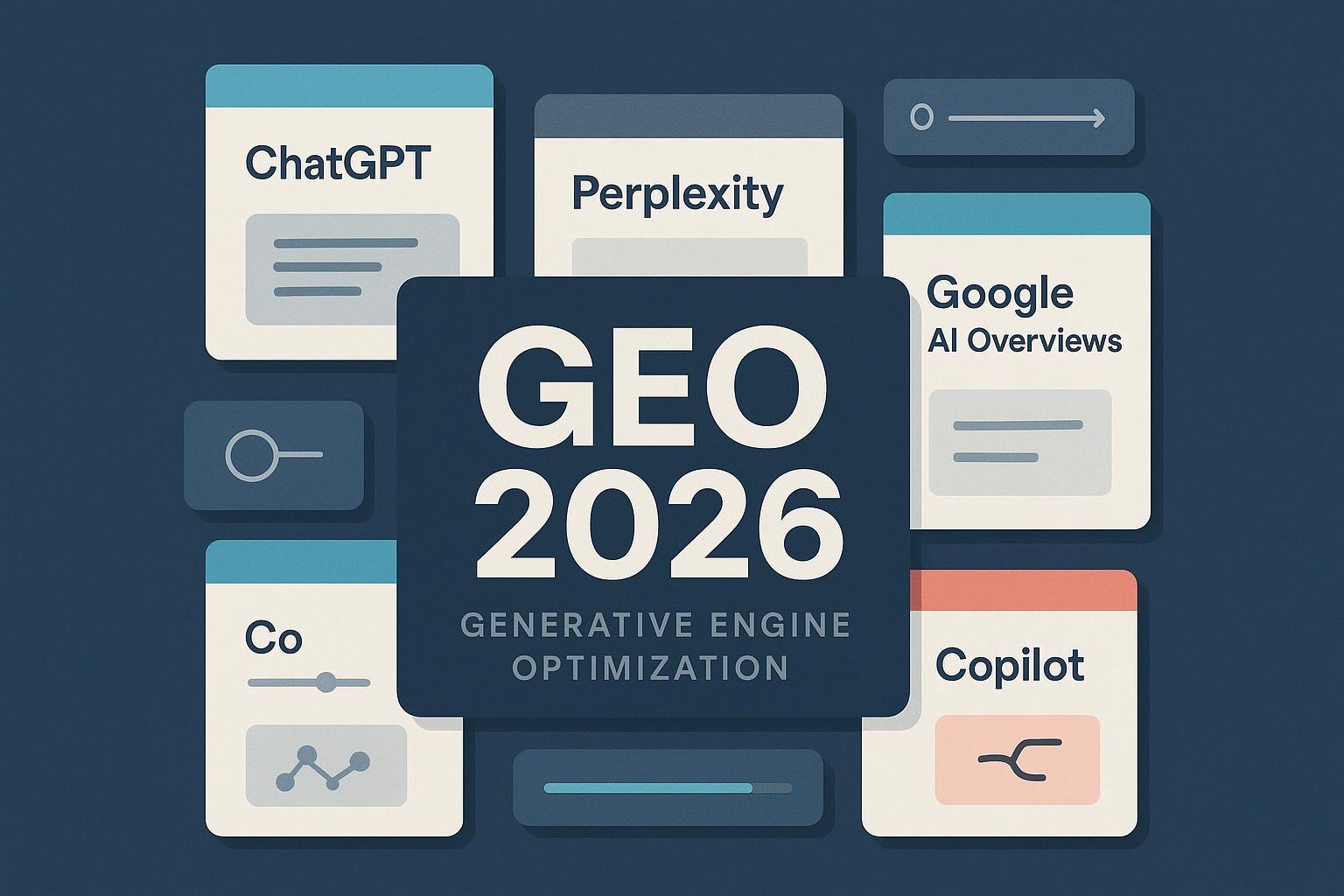2025 AI Content Guidelines: Platform Rule Changes Every Creator Must Know
Discover the latest 2025 AI content rules for TikTok, YouTube, Google, and Meta. Learn new labeling, monetization, and compliance strategies—act now!


Updated on Oct 12, 2025
Creators and brands aren’t just shipping with AI anymore—they’re shipping under new rules. In 2025, platforms tightened transparency and distribution guardrails for synthetic media while accelerating their own AI tools. The net effect: what you publish, how you label it, and how you document human oversight now meaningfully influence reach, monetization, and search visibility.
Below is a concise, evidence‑bound field guide to what changed and how to adapt without slowing output.
What actually changed in 2025 (in plain English)
- TikTok finalized a Community Guidelines refresh effective September 13, 2025, and urged creators to get familiar ahead of enforcement. See the official announcement in the TikTok Newsroom update (Aug 2025, effective Sept 13).
- TikTok also clarifies how AI‑generated content should be handled: realistic synthetic visuals or audio must be disclosed, and TikTok may auto‑apply an “AI‑generated” label that can’t be removed. Details appear in TikTok Support’s “About AI‑generated content” page (updated 2025).
- Google reiterated that AI‑assisted content can rank if it’s helpful and reliable, and warned against mass‑produced pages that add no value. See Google Search Central’s “Using generative AI content” (May 2025).
- YouTube sharpened its monetization language, clarifying on July 15, 2025, that “repetitious content” falls under “inauthentic content” and remains ineligible for monetization—an important signal for mass‑produced AI uploads. Reference YouTube Help’s channel monetization policies (July 2025 update).
- Meta maintained a label‑and‑reduce model for manipulated media and misinformation, removing only in limited, high‑risk scenarios, per its transparency hub. See Meta Transparency’s “Our approach to misinformation” (Apr 2025).
Why this matters for distribution and monetization
- Labeling is now table stakes: If your content contains realistic synthetic elements, the safest default is to disclose. On TikTok, failure to do so can lead to automatic labels—and labeling decisions may influence distribution contexts.
- “Human in the loop” isn’t optional: Google’s guidance stresses unique value and oversight. Thin, scaled AI pages (or mass‑produced videos that add nothing new) risk poor performance or policy issues.
- Commerce and credibility are linked: Platforms increasingly surface signals of authenticity (labels, provenance) and may reward native, policy‑compliant workflows over off‑platform or opaque funnels.
Platform‑by‑platform: what to do now
TikTok: labeling, LIVE hygiene, commercial disclosure
Do
- Use TikTok’s disclosure tools when your content contains realistic AI visuals or audio. See the specifics in TikTok’s own guide: About AI‑generated content (2025).
- Expect that TikTok can auto‑apply an AI label and you won’t be able to remove it if they do.
- Turn on commercial content disclosure when promoting products, your own brand, or partners. Review the official rules in TikTok’s Business/Support hubs before campaigns.
Don’t
- Don’t rely on third‑party toolchains without monitoring outcomes during LIVE or uploads; you are accountable for what appears on screen and in audio.
- Don’t assume that failing to label will go unnoticed; automated systems and provenance signals are improving rapidly.
Workflow tip
- Create a pre‑publish checklist: “Is any person, voice, or scene synthetic or materially altered?” If yes, disclose in‑app and consider embedding provenance metadata where supported by your editing stack.
YouTube: originality and disclosure for realism
Do
- Aim for authentic, original outputs—especially for monetized channels. YouTube clarified in July 2025 that “inauthentic content” (formerly repetitious) is ineligible for monetization—see YouTube Help monetization policies.
- Disclose realistic altered or synthetic content where required so viewers see appropriate labels, particularly on sensitive topics.
Don’t
- Don’t mass‑upload templated AI videos with minimal editorial work; beyond monetization risks, this is a discovery dead end.
Workflow tip
- Add a human editorial pass: facts, citations, and narrative cohesion. Keep a short reviewer log (date, editor, checks performed) for audits and appeals.
Google Search: avoid scaled content abuse; add unique value
Do
- Use AI as a drafting assistant, then add original analysis, examples, and citations. Google’s 2025 guidance is clear: usefulness and reliability matter. See Google Search Central’s “Using generative AI content”.
- Validate against Search Essentials and the spam policies before publishing at scale.
Don’t
- Don’t spin up many pages with near‑duplicate phrasing or superficial rewrites. Scaled content abuse is explicitly called out in 2025 documentation.
Workflow tip
- For each page, record: “What’s our unique value add?” If you can’t say it in one sentence, you probably need more editorial work.
Meta (Facebook/Instagram): transparency and risk controls
Do
- Anticipate labeling or reduced distribution if content could mislead. Meta’s 2025 transparency hub reiterates label/reduce versus remove in many cases—see Meta Transparency’s approach to misinformation.
- Apply clear disclosures for branded content and keep fact claims grounded.
Don’t
- Don’t publish altered media that could be mistaken for reality without context; labels and reduced reach can undercut campaign goals.
Workflow tip
- Keep captions and overlays explicit when scenes are stylized or synthetic; provide context that prevents misinterpretation.
Monitor the impact and prove compliance
- Stand up a provenance record for every asset: tools used, prompts/settings (if relevant), human reviewer(s), sources checked, date/time. Store it with the project files so you can respond quickly to platform inquiries.
- Track how AI‑labeled posts perform versus non‑labeled posts by format and topic. Look for changes in watch time, completion rate, and referral mix.
- Cross‑engine visibility matters in 2025. A neutral way to monitor how AI answers and search surfaces reference your brand is with Geneo. Disclosure: Geneo is our product. It can help teams track brand mentions and sentiment across AI answer engines and traditional search, and centralize history for audits.
- For examples of how teams adapt their AIO/SEO and social distribution after rule changes, see these 2025 AI search strategy case studies.
Provenance record template you can copy
- Asset ID and title
- AI tools used (model/app version); key transformations
- Human editor(s) and review date
- Fact sources consulted
- Disclosures/labels applied (in‑app toggles, captions)
- Final publish URLs and performance notes (30/60/90 days)
What’s next: provenance goes mainstream
Expect stronger adoption of content credentials and on‑platform labeling UIs. As platforms ship more AI creation features, they’re also raising the bar for transparency. For most teams, the winning formula is unchanged: label clearly, document rigorously, and invest in human editorial value.
We’ll keep this guide current as policy pages evolve. Revisit the primary sources before major launches and refresh your checklists quarterly.
Change‑log
- Oct 12, 2025: First publication with references to TikTok Newsroom (Sept 2025 effective), Google Search Central (May 2025), YouTube Help (July 2025), and Meta Transparency (Apr 2025).





